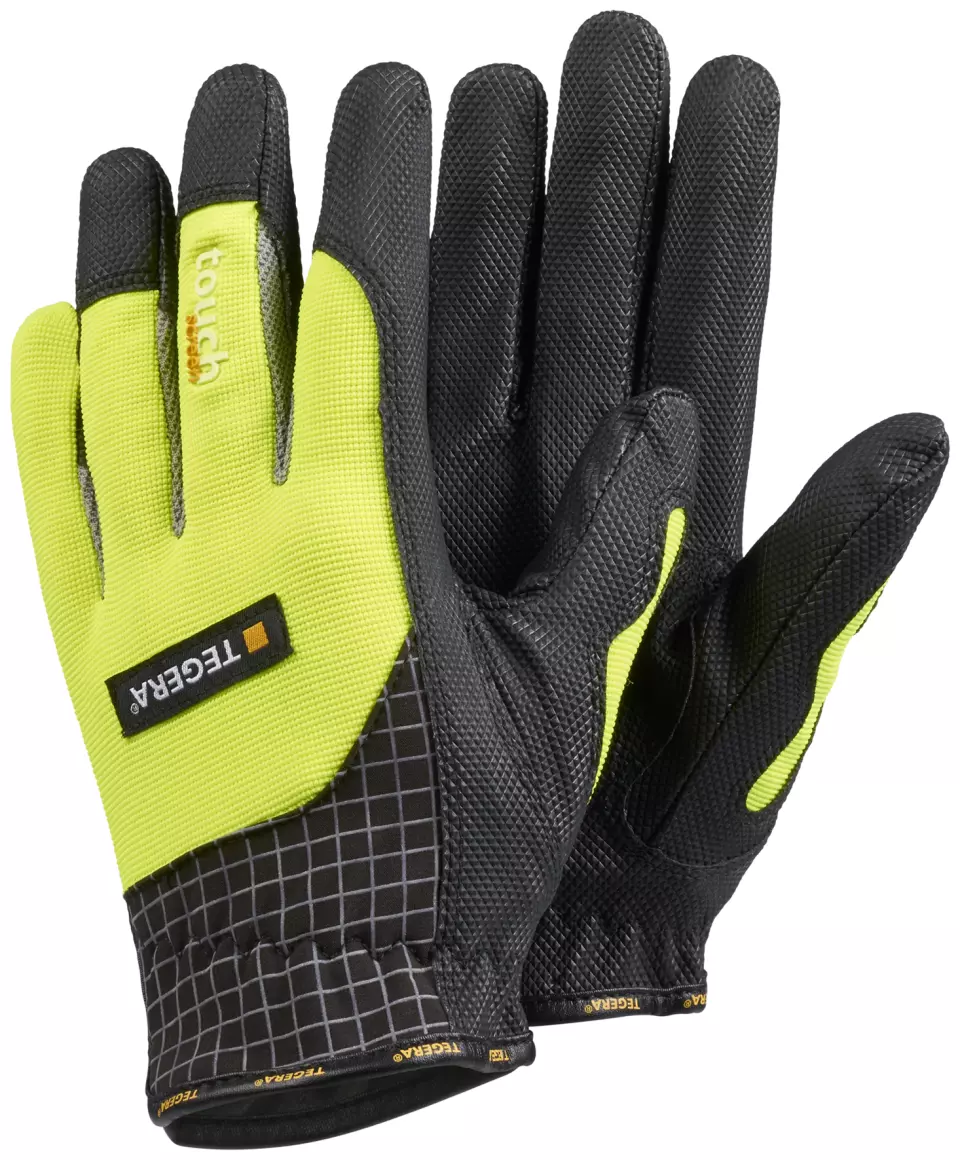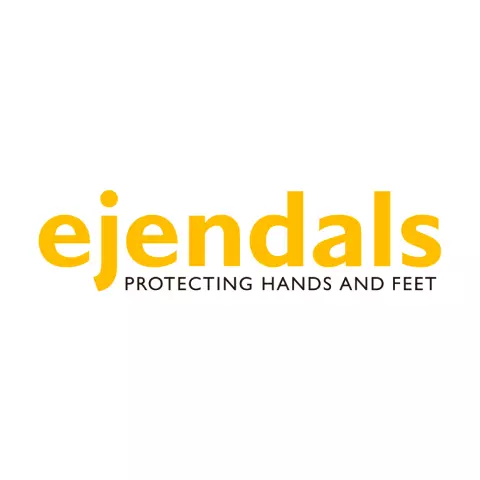TEGERA Synthetic Glove 9123
Ejendals
visit storeProduct description
TEGERA® 9123, Synthetic glove, unlined, 0.7 mm Microthan® , textured palm, polyester, Cat. II, reinforced seams, does not contain chromium, installation work
Multi-purpose design offers versatile protection and comfort, ready for a wide range of tasks.
Reinforced fingertips deliver superior durability and protection, extending glove life and safeguarding your hands.
Use your touch screen devices without removing your gloves. Stay productive and protected on the job.
Full finger coverage offers complete protection and warmth, keeping your hands safe and comfortable.
The inner lining or coating that affects comfort, grip, insulation, and protection against chemicals or allergens.
The surface texture or coating on the palm and fingers that determines how securely the gloves can grip tools, materials, and surfaces during work tasks.
Determines how the glove secures around the wrist, affecting fit, protection from debris, and ease of putting gloves on and taking them off.
- Cut Resistant
- Hand Protection
- Slip Resistant
- High Visibility
Request a free sample
Test first and buy later. Visit any product page to request your free sample.
Standards and labels
EN 420:2003+A1:2009 is a European standard that sets out the general requirements for hand protection, including comfort, fit, and dexterity. Performance requirements include resistance to abrasion, cut, tear, puncture, and impact. Test results should show the gloves meet these requirements.
EN 388:2016 is a European standard for measuring the performance of protective gloves against mechanical risks (abrasion, cut, tear, and puncture). The standard includes test methods and performance requirements for gloves to be considered compliant. Test results are reported using a series of four numbers, each representing the performance level achieved in one of the tests.
Test results
Abrasion Resistance Level 1In the EN 388:2016 standard, the Abrasion Resistance result Level 1 signifies that the tested gloves or protective materials can withstand 100 cycles of sandpaper abrasion under pressure, before developing a hole. This is considered the lowest performance level in abrasion resistance according to the standard. Generally, Level 1 abrasion resistance would be underperforming for tasks that involve frequent contact with abrasive surfaces, and might be more suitable for situations where light abrasion is the primary risk. Higher numbers (up to 4) in this test indicate stronger abrasion resistance.
Tear Resistance Level 2EN 388:2016 is a European standard that sets criteria for testing the mechanical risks for protective gloves, including abrasion, cut, tear, and puncture resistance. The Tear Resistance Level 2 designation indicates that the gloves have a moderate level of resistance to tearing. The test for tear resistance involves subjecting a sample of the glove material to a force until it tears, and the force required to initiate and propagate the tear is measured. Gloves that achieve Level 2 tear resistance can withstand between 25 to 50 Newtons of force. This level of tear resistance is suitable for tasks where gloves might face moderate stresses that could cause tearing, such as general handling and light industrial work where sharp or jagged materials are handled less frequently. These gloves provide reliable protection and durability in scenarios where some degree of mechanical risk is present but not excessively severe.
Puncture Resistance Level 1The European standard EN 388:2016 addresses the puncture resistance of protective gloves, with puncture resistance classified from Levels 1 to 4. Specifically, a Level 1 result indicates minimal puncture resistance. This level of resistance is determined by a test involving a standardized stylus with a specified diameter and force. During the test, the stylus is pressed against the material with a force up to 20 Newtons to assess how well the glove can withstand penetration. A Level 1 rating signifies that the glove provides basic protection against small punctures or stabs, appropriate for areas with minimal risk. Practical implications for this test result suggest the gloves are suitable for light tasks where major risks of punctures are not anticipated, but are not adequate for handling sharp tools or heavy equipment where higher penetration resistance would be necessary.
Cut Resistance, ISO 13997 Level XThe standard EN 388:2016, specifically its segment referring to ISO 13997 test, is designed to assess the cut resistance of materials used in protective gloves. A result denoted as 'Level X' means that test is not performed and the cut resistance of the product cannot be guaranteed.
Cut Resistance, Coup Test Level 1The EN 388:2016 standard is dedicated to gauging the mechanical risks for hand protection where a Cut Resistance, Coup Test Level 1 indicates minimal resistance to cutting because material achieved between 1.2 and 2.5 cycles before being cut through during the test. It means that the product tested at this level offers basic protection against shallow cuts, suitable for tasks with low risk of cut injuries. The test method used involves a rotating circular blade under a fixed force making contact with the fabric or material being tested. The blade moves back and forth across the material until a cut-through is achieved. The number of cycles required to cut through the sample at a consistent speed determines the cut resistance, with Level 1 being the second lowest rating after level 0. Products at this level are applicable in scenarios where there are minimal hazards from sharp objects, hence ideal for light duties where there is no significant risk of deep cuts.
PPE stands for "personal protective equipment." PPE Category 2 refers to equipment that is more complex, and has a higher level of risk. Examples of PPE Category 2 include safety helmets, ear protection, and fall arrest equipment. In Europe, PPE Category 2 must meet certain safety standards set by the European Union, which means that it must be designed and manufactured to protect the user without causing harm. Companies that make or sell PPE must prove that it meets these standards. They also must have a quality management system in place and have to be audited regularly by a notified body.
CE Marking is a label that shows a product meets certain safety and environmental standards set by the European Union. To get the CE Marking, a company must test and certify their product meets these standards. CE Marking is required for many products sold in the EU, including electronics, machinery, toys and medical devices. It helps ensure that products are safe for consumers and the environment, and allows for easy trade within the EU.
Ejendals delivery terms
Free delivery when you order more than 150,00 € from Ejendals
Supplier shipping fee 6,33 €
Brand minimum 0,00 €
91,46 €
Price per 6 pairs
15,24 € / pair
Shipping fee is 6,33 € for orders under 150,00 €
A package contains 6 pairs
Need larger quantities?
Other products you may like
Recently viewed
Need help?
Get help from our experts
Other products you may like
Similar products you may like
Autonomous sourcing platform
The most efficient way to source and order supplies for your operations
Sourcing
Ordering
List products you’re looking for and we’ll find the best products and prices for you – all for free.
Need help?
Get help from our experts



